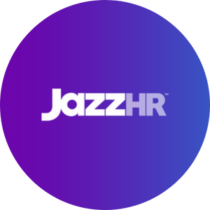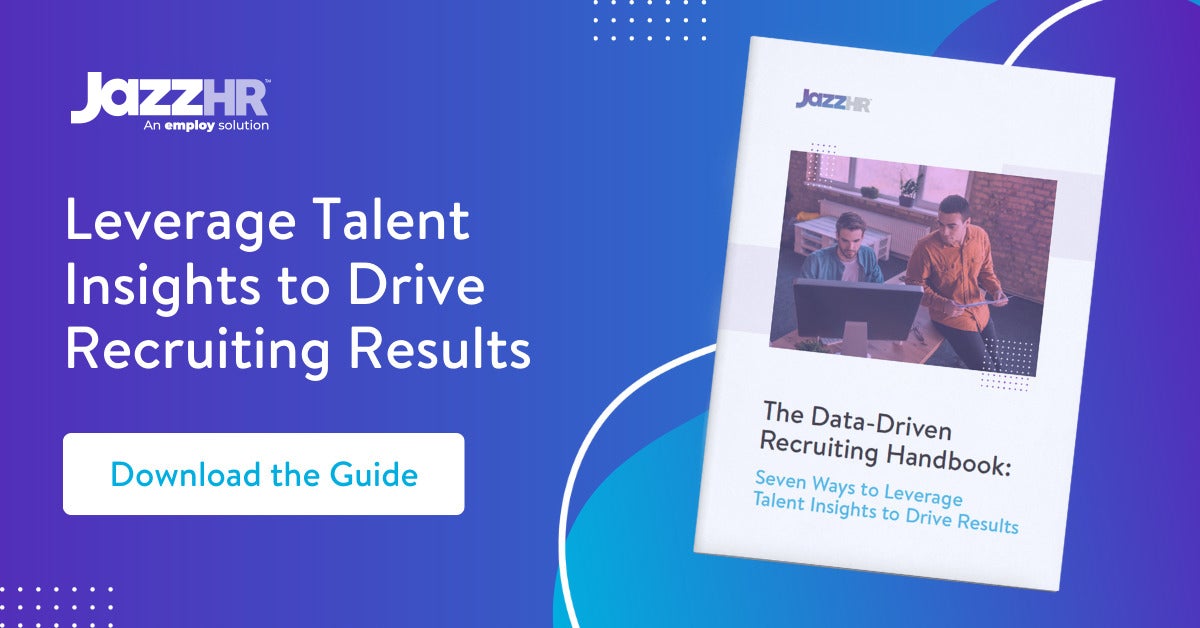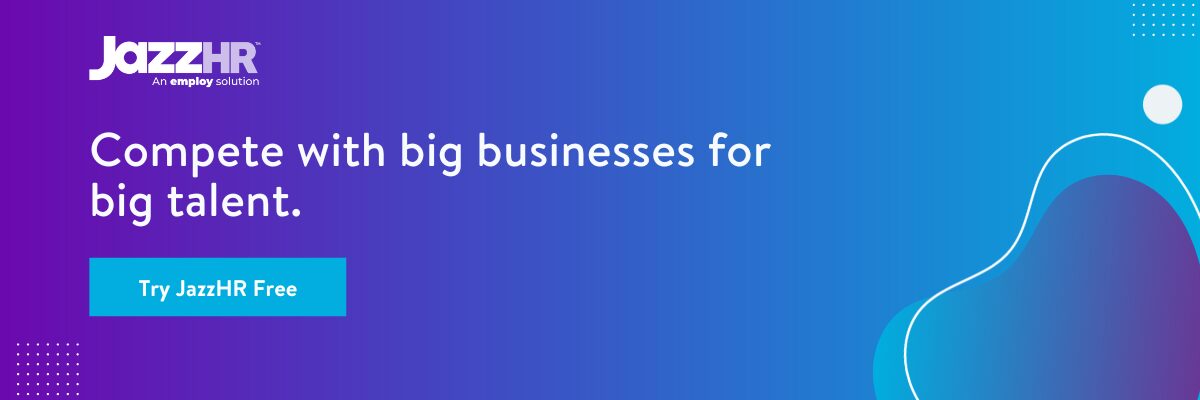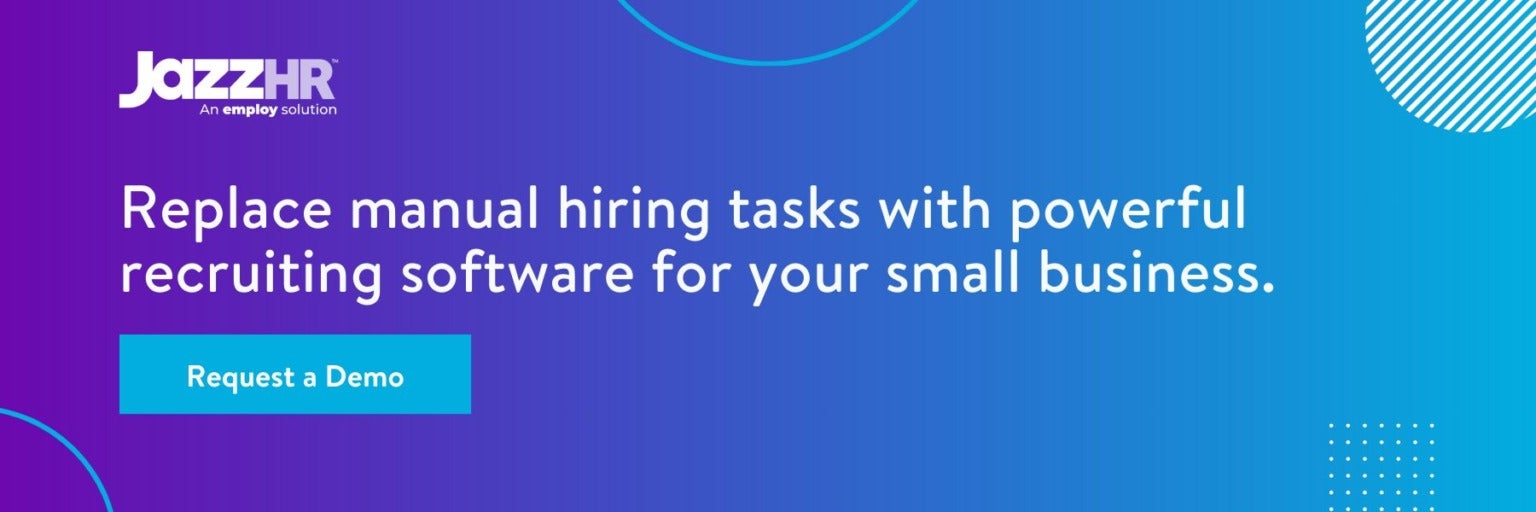
Data-Driven Recruitment: How to Hire Smarter with Analytics
Adopting a data-driven recruiting strategy is one of the best ways to future-proof the hiring processes in your small or medium-sized business (SMB). However, it can be easier said than done given your SMB’s unique hiring needs.
In this guide, you will get insight into why data-driven recruitment matters for SMBs, how to collect data, and how to use it to your advantage. Learn more about:
- Why does data-driven recruitment matter for SMBs?
- What data should SMBs track?
- The benefits of data-driven recruitment
- How to build a data-driven recruitment strategy
Why Does Data-Driven Recruitment Matter for SMBs?
Data-driven insights are important for any company, but they’re especially crucial to drive SMB success. After all, your business fights an uphill battle to compete with larger organizations for qualified talent, and any evidence-based direction can make a huge difference in your favor.
Ultimately, by incorporating data-driven insights into your recruitment approach, you can implement faster, smarter, and more efficient recruitment processes to hire high-quality employees.
What Data Should SMBs Track?
Many metrics can help your SMB improve your recruiting efforts. JazzHR’s Guide to Recruiting Metrics recommends tracking the following data points:
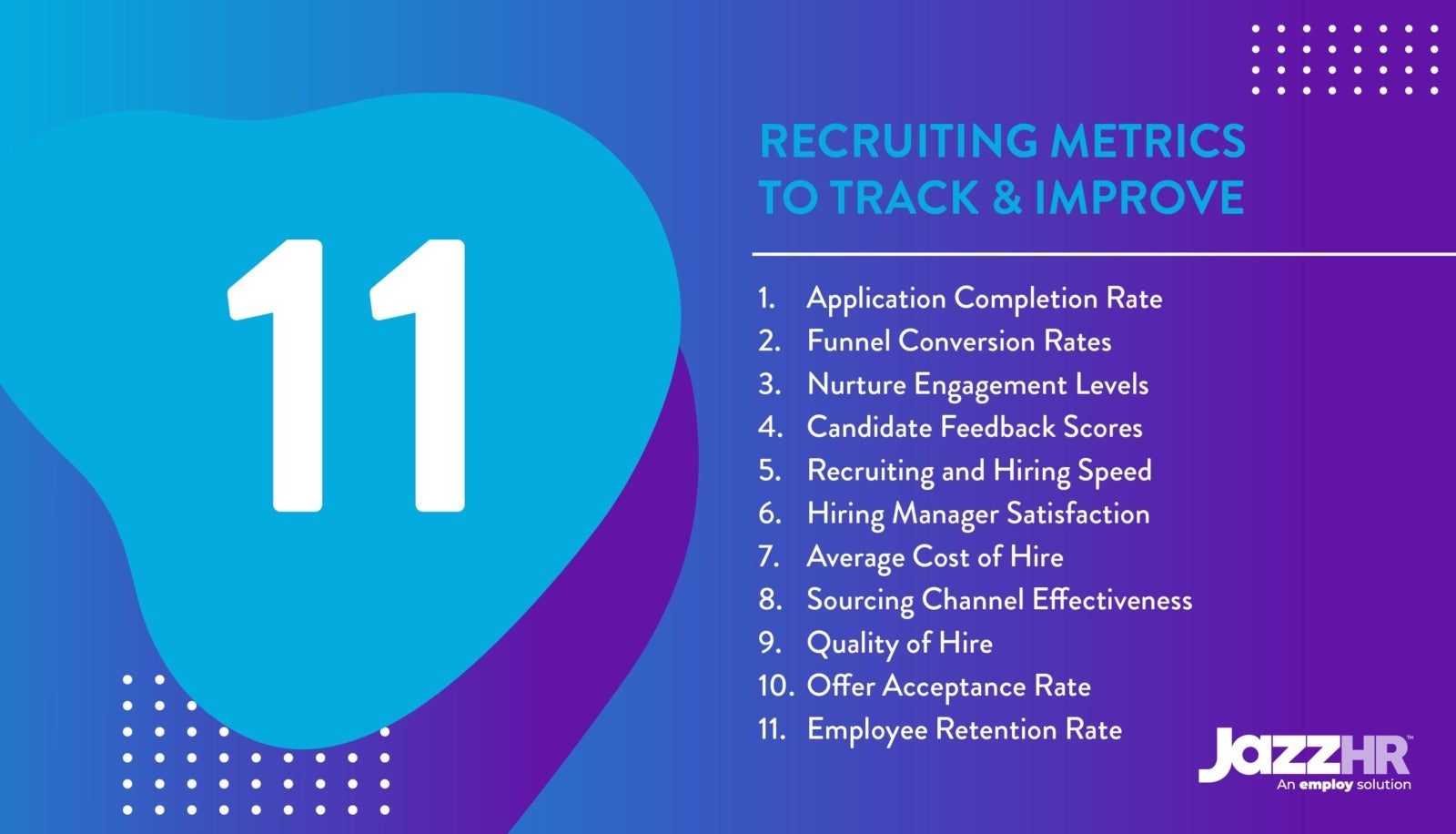
- Application Completion Rate: The measure of how many candidates started and finished an application.
- Funnel Conversion Rates: The measure of how far prospects advance through your recruiting funnel.
- Nurture Engagement Levels: The open, click, and response rates of candidate nurture messaging.
- Candidate Feedback Scores: Ratings provided by candidates about your recruiting process.
- Recruiting and Hiring Speed: How quickly candidates progress through your funnel.
- Hiring Manager Satisfaction: The measure of how satisfied and confident hiring managers are with the hiring process and chosen candidates.
- Average Cost of Hire: The measure of how much money your business spends on recruiting a hire.
- Sourcing Channel Effectiveness: The recruiting channels that yield the most and best hires.
- Quality of Hire: The ratings of new hires by managers once they’ve started their role.
- Offer Acceptance Rate: The measure of how frequently applicants accept hiring offers.
- Employee Retention Rate: The measure of how many employees remain at your business over time.
Pick your SMB’s key performance metrics from this list based on your goals. For instance, if your goal is to boost the return on investment (ROI) from your hiring process by reinforcing employee loyalty, ensure you are effectively tracking employee retention rate or quality of hire.
The Benefits of Data-Driven Recruitment
Hiring is an ever-evolving process. That means you must continuously track your key recruiting metrics and make changes to meet the needs of your small but growing business. By using analytics in your approach to recruiting and hiring, you ensure all SMB hiring stakeholders can make decisions based on real-time, unified insights.
Here are some other key advantages of data-driven recruitment to keep in mind:
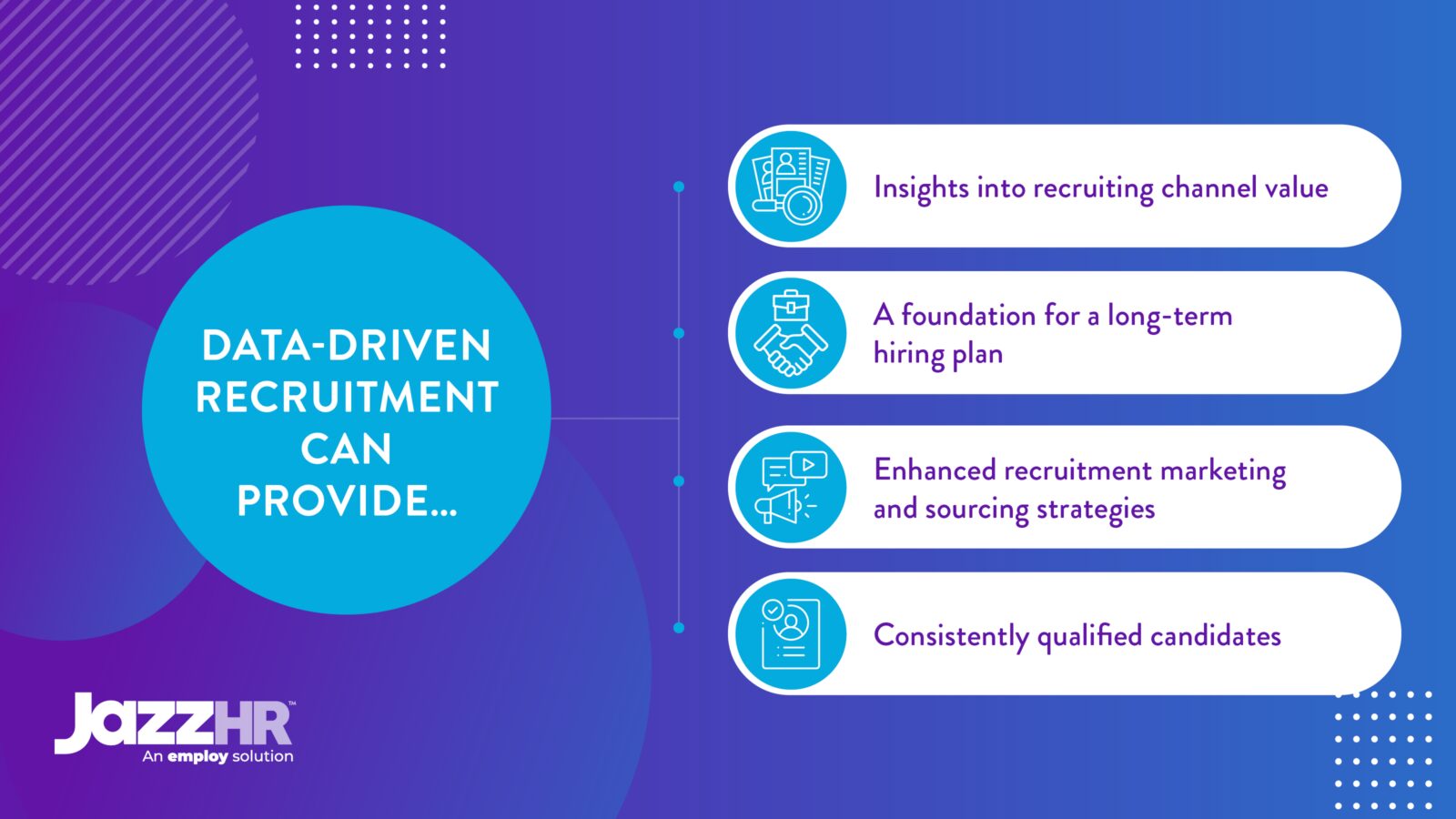
1. Insights into recruitment channel value
When it comes to recruitment channels, such as job boards and career fairs, less is more, especially for SMBs with a limited timeline and budget. Data from your recruitment channels helps you hone your efforts where they matter most and reach the right candidates faster.
Metrics that gauge recruitment channel value:
- Nurture Engagement Levels
- Funnel Conversion Rates
- Candidate Feedback Scores
2. A foundation for a long-term hiring plan
Planning for the future hiring in your SMB can be challenging when you don’t have a clear idea of your projected growth. In the face of uncertainty, data is crucial for making a relevant, realistic, and actionable long-term recruitment strategy.
Metrics that help form long-term hiring plans:
- Average Cost of Hire
- Quality of Hire
- Employee Retention Rate
3. Enhanced recruitment marketing and sourcing strategies
As an SMB, spreading the word about your company and employment opportunities can make or break your recruiting success. After all, applicants are less likely to know your brand than a larger enterprise. Understanding how to look at your recruitment funnel like a marketer can help you allocate resources efficiently and plan for the future.
Metrics that enhance recruitment marketing and sourcing:
- Sourcing Channel Effectiveness
- Candidate Feedback Scores
- Funnel Conversion Rates
4. Consistently qualified candidates
Regularly pivoting your recruiting approach to find qualified candidates reduces your recruiting ROI and puts strain on your hiring team. Use data to determine which candidates are qualified and how to source them.
Metrics that help you find qualified candidates consistently:
- Quality of Hire
- Hiring Manager Satisfaction
- Employee Retention Rate
How to Build a Data-Driven Recruitment Strategy
To create a successful data-driven recruiting strategy, your SMB needs to collect, analyze, and act on relevant data points across the hiring process. Here’s a step-by-step guide to help you get started:
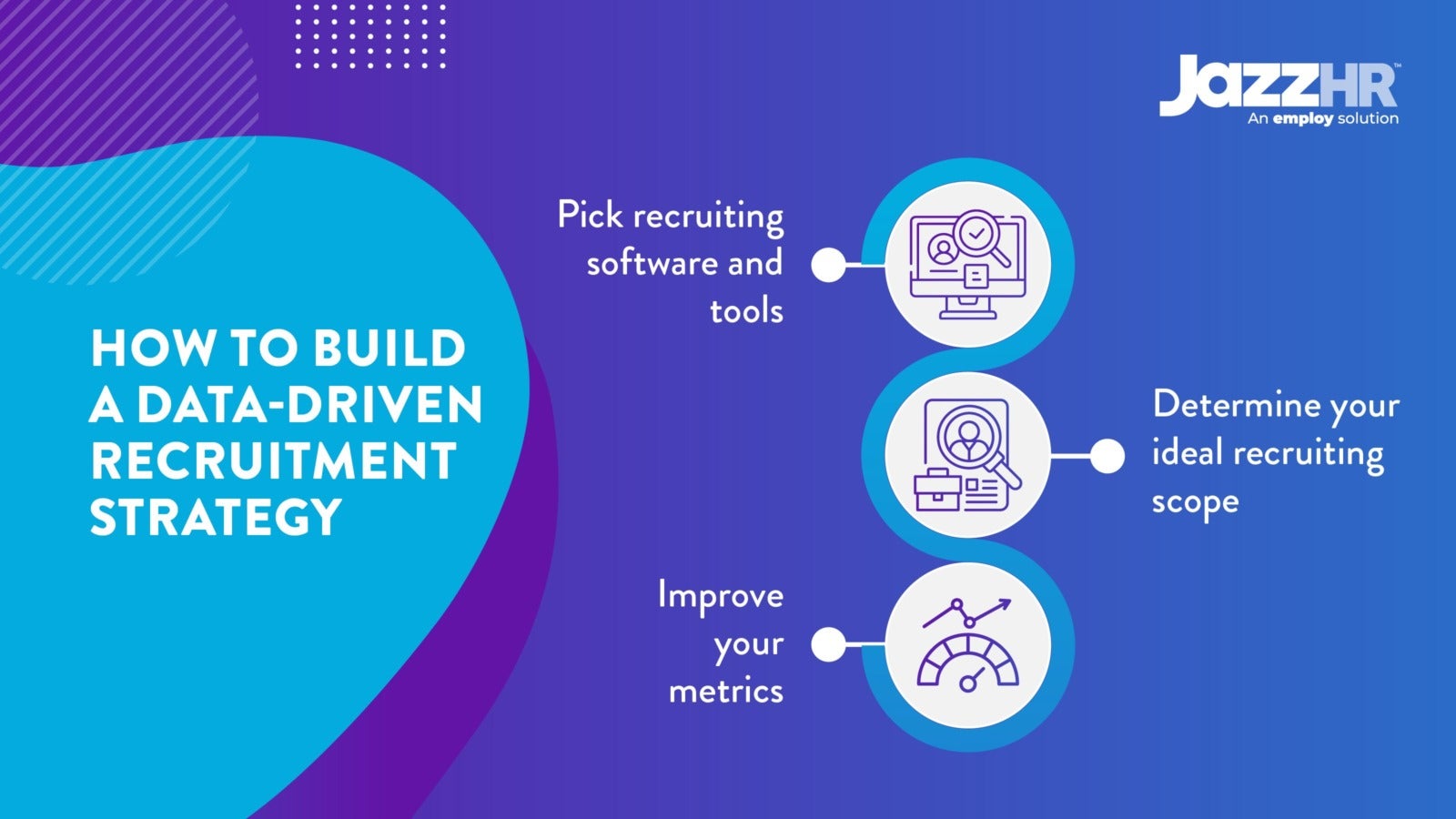
Pick Recruiting Software and Tools
None of these best practices or data-driven strategies are possible without strong recruitment software in your toolkit. According to JazzHR’s Guide to Recruiting Tools, these are the main tools available for your SMB to leverage:
- Applicant tracking system (ATS): Stores important data about your applicants and streamlines the recruiting funnel.
- Workflow management software: Empowers your hiring team to organize tasks and assign responsibilities.
- Candidate sourcing/talent pool creation tool: Finds and uncovers talent, typically passive candidates, to add to your talent database for outreach.
- Candidate feedback collection tool: Allows your hiring team to improve the candidate experience through feedback and insights on applicants.
- Candidate communication tool: Enables hiring teams to keep in touch with candidates through automation and segmentation.
- Skills assessment tool: Indicates candidate performance on specific criteria based on core competencies and strengths.
As you start building your recruitment toolkit, remember that the best choices will be those tailored to SMBs like yours, like JazzHR. When narrowing down options, request demos and read user testimonials, so you know the software will be a good fit.
Determine Your Ideal Recruiting Scope
For many SMBs, hiring typically ranges between 1 – 15 new hires per year. To determine your scope, assess resources and factors like:
- Business growth goals
- Budgetary constraints
- Turnover rates
- Industry norms
- Economic trends
- Your existing recruiting plan and timeline
Build flexibility into your recruiting scope in case factors shift unexpectedly. For example, let’s say you foresee needing two additional team members. However, you should plan for these scenarios:
- The economy takes a hit and your business can only hire one person.
- Your business grows rapidly or the industry evolves, requiring you to hire at least three people to keep up.
Improve your Data Collection Methods
Determining the most important recruitment analytics for your business to track is only the first component of a data-driven strategy. You also need to optimize how you collect your metrics, so you can draw actionable insights from them. Try these data collection best practices:
- Respect privacy: You might think to prioritize quantity when it comes to collecting data, but candidate privacy should come first. Ensure you follow recruitment data privacy regulations by obtaining consent and minimizing the amount of information collected.
- Follow data hygiene best practices: Your data is only useful if you can easily put it into reports. Organize your data by standardizing fields on your forms, conducting regular audits, and backing up your recruitment database.
- Train your team: Even if you have a very small team that handles your recruitment data, it benefits your entire SMB to understand data collection best practices. Block out a few hours for team and individual workshops for team members to understand the importance of effective data collection.
Improve Your Data-Driven Recruiting Over Time
Hiring is an ever-evolving process, meaning you must continuously track your key recruiting metrics and make changes to meet the needs of your SMB.
Ready to get started? To fully reap the benefits of a data-driven recruiting strategy, it’s crucial to invest in the right tools and resources. JazzHR’s ATS offers a range of comprehensive hiring capabilities to complement your data-driven recruiting strategy.
